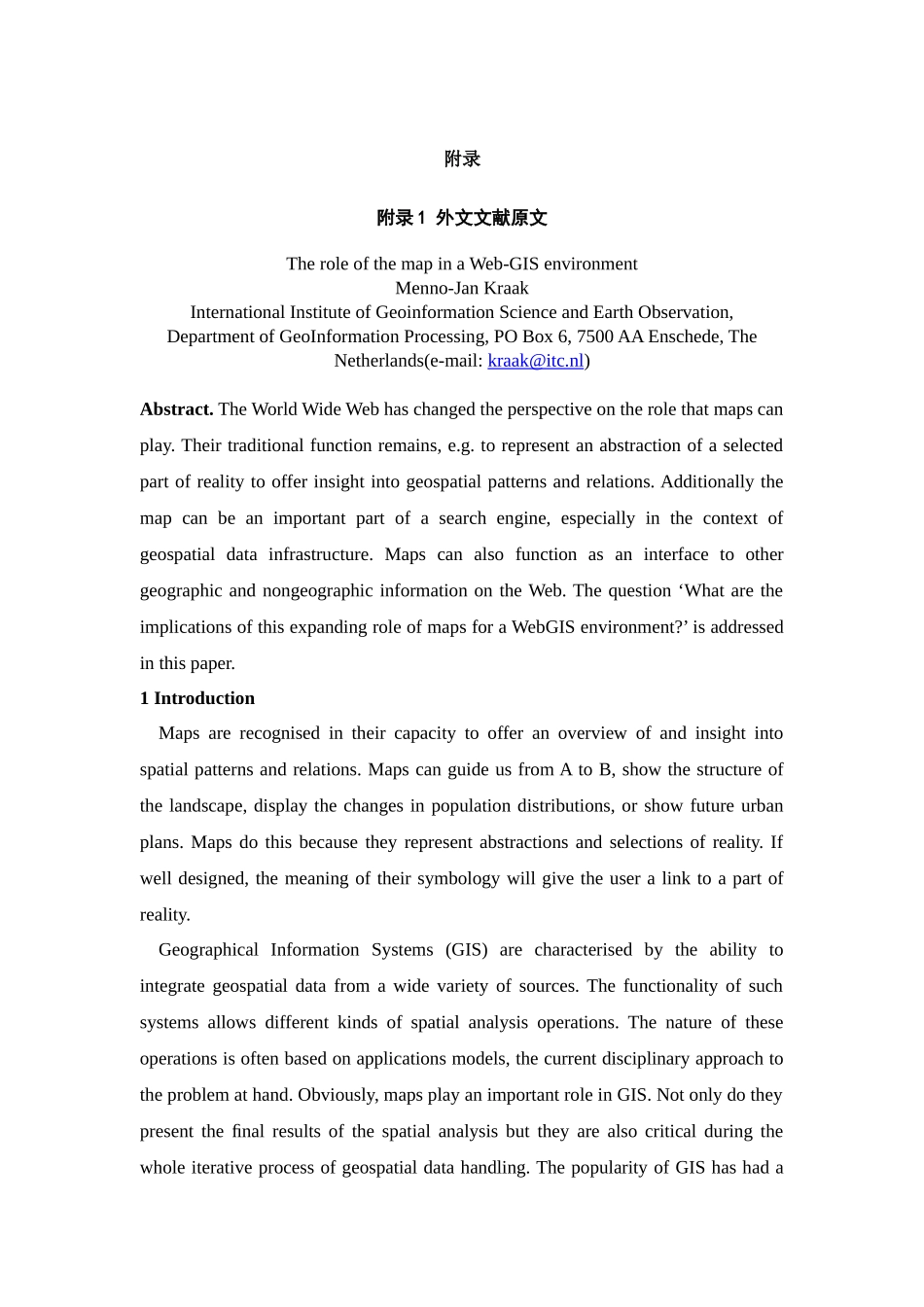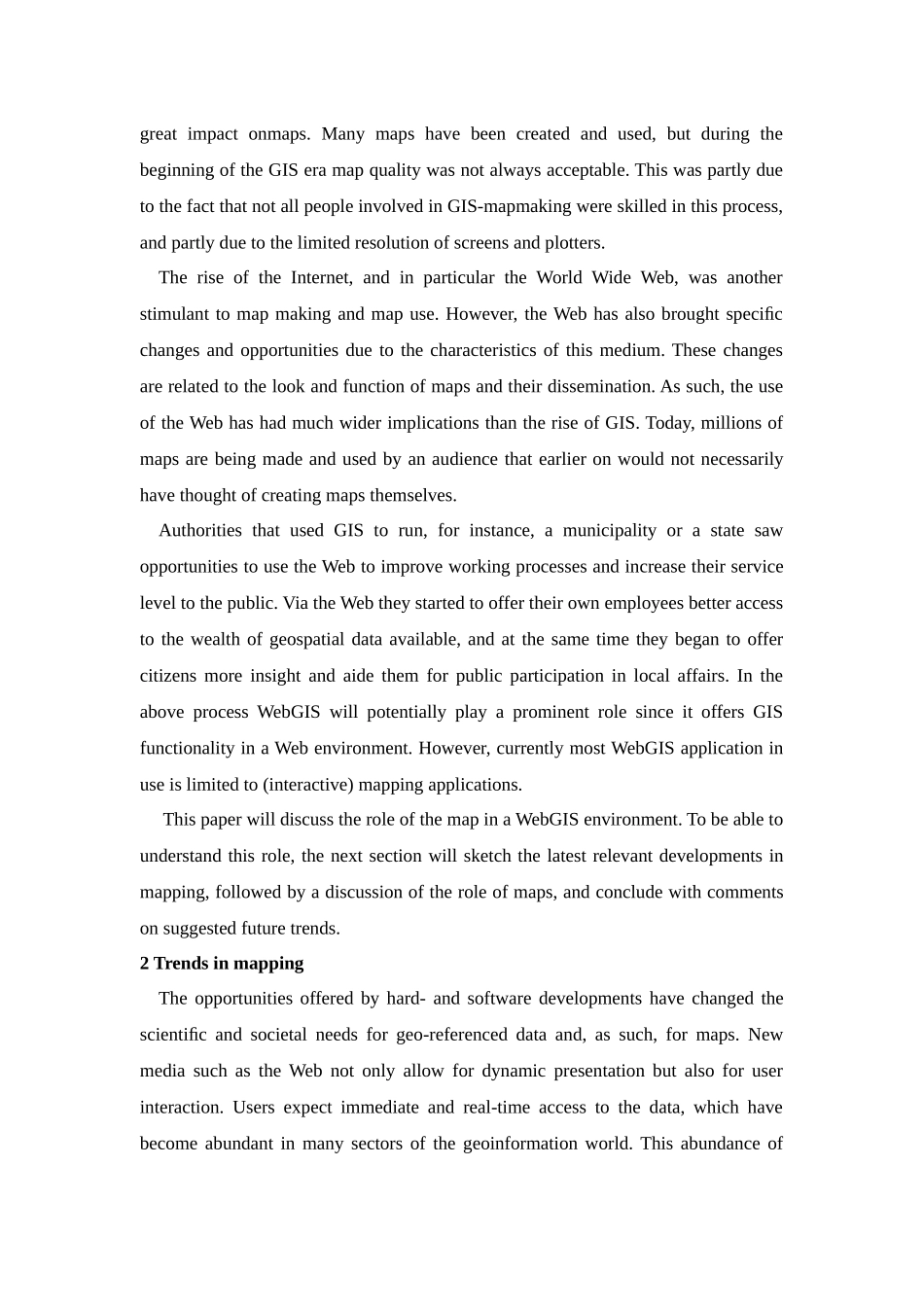附录附录 1 外文文献原文The role of the map in a Web-GIS environmentMenno-Jan KraakInternational Institute of Geoinformation Science and Earth Observation,Department of GeoInformation Processing, PO Box 6, 7500 AA Enschede, The Netherlands(e-mail: kraak@itc.nl)Abstract. The World Wide Web has changed the perspective on the role that maps can play. Their traditional function remains, e.g. to represent an abstraction of a selected part of reality to offer insight into geospatial patterns and relations. Additionally the map can be an important part of a search engine, especially in the context of geospatial data infrastructure. Maps can also function as an interface to other geographic and nongeographic information on the Web. The question ‘What are the implications of this expanding role of maps for a WebGIS environment?’ is addressed in this paper.1 IntroductionMaps are recognised in their capacity to offer an overview of and insight into spatial patterns and relations. Maps can guide us from A to B, show the structure of the landscape, display the changes in population distributions, or show future urban plans. Maps do this because they represent abstractions and selections of reality. If well designed, the meaning of their symbology will give the user a link to a part of reality. Geographical Information Systems (GIS) are characterised by the ability to integrate geospatial data from a wide variety of sources. The functionality of such systems allows different kinds of spatial analysis operations. The nature of these operations is often based on applications models, the current disciplinary approach to the problem at hand. Obviously, maps play an important role in GIS. Not only do they present the fina...


